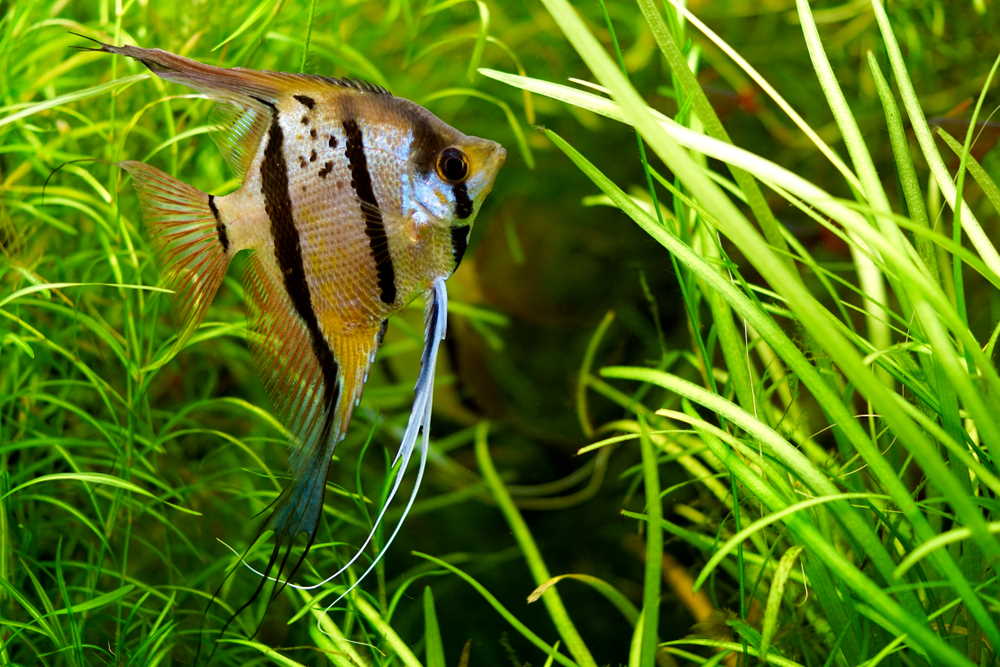Black Lace Angelfish, also known as the Black Veil Angelfish or the Black Lace Veil Angelfish, are a popular aquarium fish species that are known for their elegant black coloration and distinctive long fins. Here are some key characteristics and facts about this beautiful and unique fish:
Appearance
Black Lace Angelfish have a stunning black coloration that can range from glossy to matte depending on the lighting. Their long, flowing fins are a key feature and can extend up to twice the length of their body. They also have a distinct white or silver band around their head and a contrasting bright red eye.
Habitat and Distribution
Lace Angelfish are native to South America and can be found in slow-moving streams, rivers, and flooded forests. They prefer areas with lots of plants and hiding spots, such as fallen logs and leaf litter. In the wild, they feed on insects, small crustaceans, and plant matter.
Behavior and Uses
Black Lace Angelfish are generally peaceful and can be kept in community aquariums with other non-aggressive fish species. However, they can become territorial during breeding season and may become aggressive towards other fish. They are popular in the aquarium trade due to their unique and striking appearance.
Conservation Status
Black Lace Angelfish are not currently considered endangered, but their natural habitats are threatened by deforestation, pollution, and overfishing. As a popular aquarium fish, they are often bred in captivity and readily available in the trade.
Interesting Facts
- Black Lace Angelfish can live for up to 10 years in captivity.
- They are a type of angelfish, which are known for their graceful swimming and elegant appearance.
- In the wild, they form pairs and can become very protective of their young.
In summary, Black Lace Angelfish are a stunning and unique aquarium fish species that are prized for their striking black coloration and long flowing fins. While they are generally peaceful, they can become territorial during breeding season. As a popular aquarium fish, they are readily available in the trade, but their natural habitats in South America face threats from deforestation and pollution.

